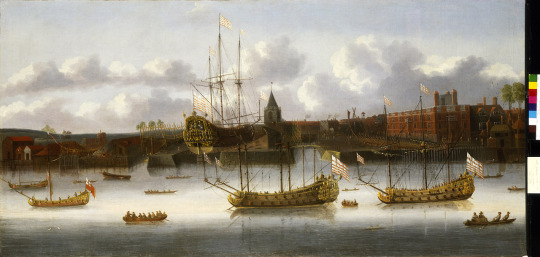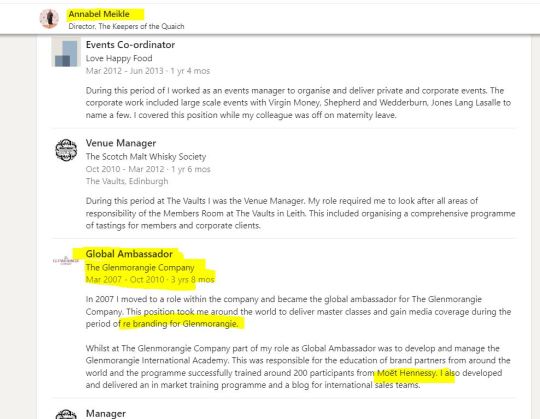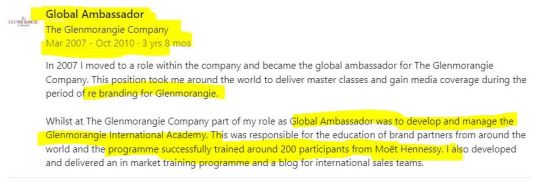#Data Collection Companies in India
Explore tagged Tumblr posts
Text
0 notes
Text
Data Collection & Market Research Firm in India: 1Lattice

1Lattice is a tech-enabled decision-support organization of data collection and market research consulting in India. 1Lattice is more than a platform; it is a seamless integration of data sources. It pulls information from diverse channels, creating a comprehensive knowledge pool. Whether it is market trends, research findings, or real-time data feeds, we have a 360-degree view of the information landscape. Elevate your business using our advanced tech tools and unique data-gathering approaches.
#data collection company india#market research consulting#market research consulting firm#market research consulting services#market research agency in india#market survey agencies#market research firms in india
3 notes
·
View notes
Text
The East India Company ships
The East and West India Company ships were not ship types in the usual sense. They were generic terms for a series of merchant ship types that travelled between Europe and the overseas colonies in the East and West. Common features of these ships were three masts, several cannons and a high bulwark to make it more difficult for attackers to board them. Their valuable cargo made the ships attractive targets, so they often travelled in convoys, accompanied by medium-armed merchant ships or frigates for protection. But let's go into more detail.

The East Indiaman 'Earl of Abergavenny', off Southsea, by Thomas Luny 1801
The ships of the East India Company were the ships of the English East India Company, a public limited company (shipowners at the early time of the East India Company contributed their ships to the company and received a certain share in the company in return. They received a proportionate share of the company's overall profits and received a dividend even if their own ship was lost, since the 18th century the company build their own ones as well.) which traded with Asia from 1600 to 1834. The company had a monopoly on trade with the East Indies, China and other regions, and its ships carried goods such as spices, tea, silk, cotton, porcelain and opium. The company also played an important role in the colonisation and administration of India and other territories.

East India Company ships at Deptford, by English School, c. 1660
The ships of the East India Company were known as East Indiamen or as Indiamen and were among the largest and most modern of their time. They were designed to withstand long voyages, carry heavy cargoes and defend themselves against pirates and enemy ships. They were also equipped with cannons and muskets and had a crew of sailors, soldiers, officers and passengers. Because of the need to carry heavy cannons, the hull of the East Indiamen - like most warships of the time - was much wider at the waterline than on the upper deck, so the guns on the upper deck were closer to the centreline to increase stability. This is known as a tumblehome. The ships usually had two complete decks for accommodation within the hull and a raised aft deck. The aft deck and the deck below were lit by galleries with square windows at the stern. To support the weight of the galleries, the hull lines were full towards the stern. As mentioned above, the ships were armed and painted to look like a warship and an attacker could not be sure if the embrasures were real or just painted, and some Indiamen carried a substantial armament.

Two views of an East Indiaman of the time of King William III, by Issac Sailmaker, 1685
The Royal Navy acquired several East Indiamen during the Napoleonic Wars and made them fourth rate ships (e.g. HMS Weymouth and HMS Madras), perpetuating the confusion of military ships with merchant vessels as prizes. In some cases, the East Indiamen successfully fended off attacks by the French. One of the most famous incidents occurred in 1804 when a fleet of East India ships and other merchant vessels under Commodore Nathaniel Dance successfully fought off a squadron commanded by Admiral Linois at the Battle of Pulo Aura in the Indian Ocean. And during this time, some of the ships were even travelling under the protection of a Letter of Marque, which allowed them to make their own prizes.

The East Indiaman 'Prince of Wales' disembarking troops off Gravesend, 1845, by John Lynn, 1845 or later - She was built by Green's of Blackwall in 1842 to a design known as that of the "Blackwall Frigates" - Indiamen with the single-decked appearance of frigates.
The ships of the India Companies were not only involved in trade, but also in exploration, diplomacy, warfare and scientific research. They visited many harbours and islands, built factories and forts, fought in battles and wars, negotiated treaties and alliances and collected samples and data. With the advent of the smaller and faster Blackwall Frigates in 1834 came the end of the great Indiamen as these small frigates sailed much faster.
#naval history#east and west india company#ships#1600-1834#blackwall frigate#age of sail#merchant vessels
162 notes
·
View notes
Text
Keepers of the Quaich
This time, we're going to look at things a bit differently and this could very well be my most speculative post ever. So be it: it is a risk I am taking and warning you about from the get go.
The only thing Mordor understood about the next October 4 event organized by the US Chapter of The Keepers of the Quaich is something that probably gave them collective relief: S is not going to be with C on her birthday. Not together. Not on the same continent. Shut up, shippers, you are stupid.
As usually, Mordor takes things at a very primitive face value, without bothering for context. But they always focused on the lewd side of the story, not on its deep ramifications, of which there are many. Anything that denies S's halfwit manwhore image upsets them greatly.
The Scottish society of The Keepers of the Quaich is not one of those old, steeped in tradition clubs, but it is damn selective. It only dates back to 1988, which is almost five minutes ago, for Europe (and especially the UK) and is deeply rooted in Highlands' lore, celebrating excellence in whisky trade and promotion worldwide. General facts about it have already been discussed elsewhere, but with a bias and little to no context. Also, really LOL at Mordor's idiocy to think that was a fan promotion event and go ballistic for the members-only and by invitation access to it.
Membership is by co-opting and with a five-year proven performance history only (ten years, if you step up to Master level). You need not one, but two recommendations, which makes it harder to join than a Masonic lodge or the Rotary Club (and I know what I am saying, heh). That S could actively seek to be inducted, rather sooner than later, is pretty much clear, as he could use the network it readily provides, along with the prestige:

(Sourced at: https://www.diffordsguide.com/encyclopedia/341/people/keepers-of-the-quaich)
I first had a look at the list of its International Chapters and it is interesting to notice Muslim countries as Turkey or the Emirates each having their own chapter, which clearly tells me it's all about luxury and more specifically, luxury hospitality business, in that case. If inducted after the customary five years' wait, S could also make good use of the German chapter's (a market that proved to be very problematic for him) network, along with the Nordics and Netherlands, if he would think about cleverly expanding his trade in the EU. Last but not least, I would keep an eye on Brazil and India (along with the more predictable South Africa and Australia), because he already has a solid fanbase in the first one and well, Asia is always interesting, when it comes to alcohol business.
I did not really bother with the list of the Patrons, which spells a good and prestigious sliver of Debrett's Peerage's Scottish section. But I also looked at the list of the Management Committee, who does all the hands-on dealings and is directly responsible for the induction ceremony of new members. Aside from representatives of Diageo and Pernod Ricard (giants of the alcohol business world), a familiar name popped right at the bottom of the page:

Annabel Meikle, Director of The Keepers of the Quaich and as such, directly involved in the management of its activities (and probably also in all the underground shenanigans leading to the induction of new members, too). A great contact to have in your rolodex, judging by her public CV on LinkedIn:

Glenmorangie (also a member of the Keepers) - keep that reference under your sleeve, we are going to need it soon :).
Could she be related to...

I am leaving this without an answer, because I don't know and I will always refuse to go data mining for anything, but that sure as hell is not a common surname, as Smith or Martin!
At any rate, Mrs. Meikle is also (along with the Duke of Argyll, the current Keepers Grand Master) a member of The Scottish Committee of something very, very prestigious: The Worshipful Company of Distillers (https://www.distillers.org.uk/), based in London and founded in 1638, by Royal Charter (for “Body Politique and corporate” to govern the “Trade Arte and Mystery of Distillers of London” - how I love history, people!) granted by Charles I, a Stuart (of course). I am speculating and having visions of Livery status and Freedom of the City, followed by Knighthood for S (no bong needed, this particular narrative writes itself and believe it or not, it's not entirely without logic). And it is my strict constitutional right to be a poetic coo about it - that guy is smarter than we thought and I would curate that contact to death if I were him (but I am not, I am just a benevolent and intrigued observer, as you all know). Back to Earth from these optimistic conjectures, I will keep a tab on it, as I dutifully took note that one of their current interests is tequila:

Onwards to the US. We can have a fair idea of October 4th event just by looking at one of their few press releases on the occasion of the Chapter's launch gala, on September 25 2019, in New York (https://www.distilledspirits.org/wp-content/uploads/2019/10/KOTQUSA-Release-10.04.19.pdf - with quotes selected by me):



Moët Hennessy. Another reference to keep under our sleeve, for it will be soon very relevant. So yes, what has been speculated by Miss Marple is partially true: more business than aristocratic. But this is only if we do not consider as American aristocratic the venue of the next event. The Metropolitan Club is a very East Coast, WASP old money and (well, technically yes) Republican (but not MAGA Republican and this, to me, is very important for some reason) organization:

That was the state of play on Friday, folks, and I was already excited to share my optimistic findings with you. And then, C went to Paris and more dots started to speculatively connect. Bare with me for this long passegiata, I think it's worth it.
It was particularly important that C would be seen in a very friendly-casual pose with Delphine Arnault, out of all the other people attending that event. Not because Arnault is currently the big boss of Dior and Loewe (as I already explained here: https://www.tumblr.com/sgiandubh/729801825900953600/city-of-lights?source=share). And not only because C suddenly seems very interested to renew and expand her fashion days' old network. But also, because, as I already said, Delphine Arnault is also the daughter of her father and in France, business and family are always closely entwined. Always.
The French luxury market is roughly split between two behemoth players: Bernard Arnault (LVMH Moët Hennessy • Louis Vuitton S.A) and Antoine Pinault (Kering, ex- Pinault-Printemps- Redoute). These people and their businesses are number 1 and 2, respectively, on the global market. And out of these two, the only one very interested in the alcohol business is Arnault (Pinault does not deal in this sector).
So I took a look at his very diverse alcohol and spirits brand portfolio (25 references - https://www.lvmh.com/houses/wines-spirits/): rhum, brandy, champagne, tequila, wines (Argentina and even China). Two Scottish whisky brands: first Ardberg (the graceful peat from Islay). And - oh, hello, Mrs. Meikle - Glenmorangie, acquired by Arnault in 2004, after a bitter battle with Pernod Ricard (https://www.nytimes.com/2004/10/21/business/world-business-briefing-europe-france-scotch-maker-acquired.html):

Back at Mrs. Meikle's CV - hers was a pivotal role in the post-acquisition reshuffle, as part of LVMH:

Coincidence? I think not.
And then also a bourbon reference. Woodinville (based in the state of Washington, USA) with a pitch that made me grin again like the Cheshire Cat:

Sounds familiar? Rings a bell? See a pattern? You should: no, it's not S in disguise, but it could be SS in a couple of years, if S decided to sell it for a hefty profit.
But I was also interested in what is missing from this catalogue.
NO GIN.
Who knows? Maybe these French people could be enticed? In that case (and remember: I am SPECULATING), it would have to be a brand with a proven track record. You see, Arnault is famous for always buying only brands with a proven history and proven recognition (Tasting Alliance, anyone? LOL). Up until now and as is, FMN is just a pet project and a virtual endeavor. Nothing more and we shall see. But that little wild Scottish gin which could win hearts and already an award in Frisco is something completely different.
Now, then. You connect the dots. You draw your own conclusions. I see something very intriguing here and, as I already told you, the business underground situation is completely different from the bland façade.
You see, this is not about papers or checking a pulse or awkwardly grabbing a fist on some stairs. This is show me the money time. This is all about finding unexpected connections, at a very high level and on a very narrow niche.
So you think S and C can't stand each other anymore?
Humbug. They have each other's back from Day 1. And more. Ship on, ladies. Whatever clownery these days might bring, I know what I know. And by now, you should start asking yourselves the real questions, not if Waldo is with Carmen Sandiego (we KNOW), nor if they were online at the same time or not. I mean, that's cute: but to be honest, I think we're past that... uh... waypoint?
Next on my list is that Lallybroch trademark thing. This is the most complex one and I will take my time. I may speculate, but never without a logical base. And I always take these things very seriously.
Keepers of the Quaich, indeed. :)
247 notes
·
View notes
Text
Elon Musk will be pleased that his surprise jaunt to China on Sunday garnered many glowing headlines. The trip was undoubtedly equally a surprise to Indian prime minister Narendra Modi, who had been scheduled to offer Musk the red carpet on a long-arranged visit.
The billionaire blew off India at the last minute, citing “very heavy Tesla obligations.” Indeed, Tesla has had a tumultuous couple of weeks, with federal regulator slap-downs, halved profits, and price-cut rollouts. Yet, in a very public snub that Modi won’t quickly forget, the company CEO made time for Chinese premier Li Qiang. And well Musk might. Tesla needs China more than China needs Tesla. After the US, China is Tesla’s second biggest market. And ominously, in the first quarter of the year, Tesla’s sales in China slipped by 4 percent in a domestic EV market that has expanded by more than 15 percent. That’s enough of a hit for any CEO to jump in a Gulfstream and fly across the Pacific for an impromptu meeting with a Chinese premier. Globally, Tesla has lost nearly a third of its value since January, and earlier this month, Tesla’s worldwide vehicle deliveries in the first quarter fell for the first time in almost four years. As they are wont to do, Tesla investors continue to complain over repeated delays to the company’s rollout of cars with genuine driverless capabilities.
One of Tesla’s stop-gap technologies—a now heavily-discounted $8,000 add-on—is marketed as Full Self-Driving, or FSD. But, like the similarly confusingly named Autopilot feature, it still requires driver attention, and may yet still prove to be risky. Among the deals said to have been unveiled at Sunday’s meeting with Li Qiang was a partnership granting Tesla access to a mapping license for data collection on China’s public roads by web search company Baidu. This was a “watershed moment,” Wedbush Securities senior analyst Dan Ives said in an interview with Bloomberg Television. However, Tesla has been using Baidu for in-car mapping and navigation in China since 2020. The revised deal, in which Baidu will now also provide Tesla with its lane-level navigation system, clears one more regulatory hurdle for Tesla’s FSD in China. It does not enable Tesla to introduce driverless cars in China or anywhere else, as some media outlets have reported. Press reports have also claimed that Musk has secured permission to transfer data collected by Tesla cars in China out of China. This is improbable, noted JL Warren Capital CEO and head of research Junheng Li, who wrote on X: “[Baidu] owns all data, and shares filtered data with Tesla. Just imagine if [Tesla] has access to real-time road data such as who went to which country’s embassy at what time for how long.” That, she stressed, would be “super national security!” According to Reuters, Musk is still seeking final approval for the FSD software rollout in China, and Tesla still needs permission to transfer data overseas. Li added that a rollout of even a “supervised,” data-lite version of FSD in China is “extremely unlikely.” She pointed to challenges for Tesla to support local operation of the software. Tesla still “has no [direct] access to map data in China as a foreign entity,” she wrote. Instead, Tesla is likely using the deal extension with Baidu as an FSD workaround, with the data collected in China very much staying in China. Despite this, Tesla shares have jumped following news of the expanded Baidu collaboration. Furthermore, Li said there’s “no strategic value” for Beijing to favor FSD when there are several more advanced Chinese alternatives. (We’ve tested them.)
“Chinese EVs are simply evolving at a far faster pace than Tesla,” agrees Shanghai-based automotive journalist and WIRED contributor Mark Andrews, who tested the driver assistance tech available on the roads in China. The US-listed trio of Xpeng, Nio, and Li Auto offer better-than-Tesla “driving assistance features” that rely heavily on lidar sensors, a technology that Musk previously dismissed, but which Tesla is now said to be testing. Although dated in shape and lacking in the latest tech, a Tesla car is nevertheless more expensive in China than most of its rivals. Tesla recently slashed prices in China to arrest falling sales. Musk’s flying visit to China smacked of “desperation,” says Mark Rainford, owner of the Inside China Auto channel. “[Tesla] sales are down in China—the competition has weathered the price cuts so far and [the Tesla competitors have] a seemingly endless conveyor belt of talented and beautiful products.” Rainford further warns that the “golden period for Tesla in China” is “at great risk of collapsing.” Tesla opened its first gigafactory in Shanghai five years ago, and it is now the firm’s largest—but the automaker has been playing tech catchup in China for some time. In addition to Xpeng, Nio, and Li, there are other Chinese car companies competing with Tesla on autonomous driving, as Musk will see if he visits the Beijing Motor Show, which runs through this week.
Beijing is now arguably the world’s preeminent automotive expo, but Tesla is not exhibiting—a sign that it has little new to offer famously tech-hungry Chinese autobuyers. Pointedly, the Cybertruck is not road-legal in China, although that hasn’t stopped Tesla from displaying the rust-prone electric pickup in some of its Chinese showrooms. Likewise, Tesla has just announced plans for a European Cybertruck tour. But, just like in China, the EV pickup cannot be sold in the EU, either—and according to Tesla's lead on vehicle engineering, it likely never will be.
Speaking on tighter pedestrian safety regulations in the EU compared to the US, Tesla’s vice president of vehicle engineering, Lars Moravy, told Top Gear that “European regulations call for a 3.2-mm external radius on external projections. Unfortunately, it’s impossible to make a 3.2-mm radius on a 1.4-mm sheet of stainless steel.”
The “Cybertruck Odyssey” tour—as Tesla’s European X account calls it—may titillate Tesla fans, but it could prove to be about as useful as shooting a Roadster into space.
29 notes
·
View notes
Text
Unlocking Global Trade Insights: The Power of Import and Export Data
Businesses, analysts, and policymakers must comprehend import and export data in the connected global economy of today. Trade data provides vital information about global supply chains, competitive environments, and market trends. Access to precise and timely import-export trade data can be crucial for small exporters searching for new markets or multinational corporations honing their sourcing strategy.
What is Import and Export Data?
Import and export data refers to detailed records of goods traded between countries. These records usually include information such as:
Product descriptions and codes (usually using HS Code or Harmonized System)
Quantity and value of goods traded
Countries of origin and destination
Ports used in shipping
Names of importers and exporters (in some datasets)
Date and mode of shipment
Governments collect this data through customs declarations and publish it either publicly or through commercial channels.
Why Is Import Export Data Important?
Market Research & Opportunity Identification Businesses can identify which products are in high demand in specific countries. For example, if India is importing a high volume of electronics from China, it indicates a steady market demand that other suppliers may tap into.
Competitor Analysis With the help of import export data providers, companies can analyze their competitors’ trade volumes, sourcing strategies, and market reach. This transparency can fuel more strategic planning.
Supply Chain Optimization Importers can identify alternative suppliers, especially during disruptions. Exporters, on the other hand, can find new buyers globally, improving resilience and profitability.
Regulatory Compliance Knowing the proper HS code and documentation needed can ensure smooth customs clearance. Import export trade data also helps businesses stay compliant with regulations like anti-dumping laws or sanctions.
How to Access Import and Export Data
There are two main sources for accessing trade data:
Government Databases Many governments publish import/export statistics through trade ministries or customs departments. For instance, the U.S. International Trade Commission (USITC) or India’s Directorate General of Foreign Trade (DGFT) provide some free tools.
Import Export Data Providers Professional data providers offer more granular and actionable data, often including shipment-level details, company names, and advanced analytics tools. These services may come with a subscription fee but provide great value for in-depth market intelligence.
Some popular import export data providers include:
ImportGenius
Panjiva
Export Genius
TradeMap
Datamyne
These platforms often allow you to filter data by HS code, time period, country, product category, or company name, offering deep insights.

Applications of Import Export Trade Data
Business Expansion: A company producing solar panels can study which countries are importing such products and approach potential buyers.
Price Benchmarking: Traders can compare average prices per unit in different markets and negotiate better deals.
Trend Analysis: Historical data can highlight seasonal trends or emerging markets for certain products.
Customs Brokerage: Brokers can use the data to guide clients through documentation, tariffs, and regulations in different regions.
Challenges in Using Import Export Data
While powerful, this data isn’t always straightforward. Challenges may include:
Data Inconsistency: Not all countries report data in the same format or frequency.
Data Accessibility: Some detailed data sets are behind paywalls.
Privacy: In certain jurisdictions, business names in shipment-level data are restricted for privacy reasons.
Final Thoughts
Data that is imported and exported is a strategic asset that is more than just numbers. Businesses can confidently and clearly navigate global markets with the assistance of a trustworthy import export data provider. Import export trade data is your key to making well-informed, data-driven decisions, whether you're sourcing products, researching new markets, or evaluating the competition.
To stay ahead in the constantly changing world of commerce, embrace the power of global trade intelligence.
#Import And Export Data#Import Export Data Provider#import export data#Import Export Trade Data#Data Vault Insight
3 notes
·
View notes
Photo

Smoke and Ashes: Opium's Hidden Histories
"Smoke and Ashes: Opium’s Hidden Histories" is a sweeping and jarring work of how opium became an insidious capitalistic tool to generate wealth for the British Empire and other Western powers at the expense of an epidemic of addiction in China and the impoverishment of millions of farmers in India. The legacy of this “criminal enterprise,” as the author puts it, left lasting influences that reverberate across cultures and societies even today.
Written in engaging language, Smoke and Ashes is a scholarly follow-up to the author’s famous Ibis trilogy, a collection of fiction that uses the opium trade as its backdrop. In Smoke and Ashes, the author draws on his years-long research into opium supplemented by his family history, personal travels, cross-cultural experience, and expertise in works of historical verisimilitude. Composed over 18 chapters, the author delves into a diverse set of primary and secondary data, including Chinese sources. He also brings a multidimensional angle to the study by highlighting the opium trade's legacy in diverse areas such as art, architecture, horticulture, printmaking, and calligraphy. 23 pictorial illustrations serve as powerful eyewitness accounts to the discourse.
This book should interest students and scholars seeking historical analysis based on facts on the ground instead of colonial narratives. Readers will also find answers to how opium continues to play an outsize role in modern-day conflicts, addictions, corporate behavior, and globalism.
Amitav Ghosh’s research convincingly points out that while opium had always been used for recreational purposes across cultures, it was the Western powers such as the British, Portuguese, the Spaniards, and the Dutch that discovered its significant potential as a trading vehicle. Ghosh adds that colonial rulers, especially the British, often rationalized their actions by arguing that the Asian population was naturally predisposed to narcotics. However, it was British India that bested others in virtually monopolizing the market for the highly addictive Indian opium in China. Used as a currency to redress the East India Company (EIC)’s trade deficit with China, the opium trade by the 1890s generated about five million sterling a year for Britain. Meanwhile, as many as 40 million Chinese became addicted to opium.
Eastern India became the epicenter of British opium production. Workers in opium factories in Patna and Benares toiled under severe conditions, often earning less than the cost of production while their British managers lived in luxury. Ghosh asserts that opium farming permanently impoverished a region that was an economic powerhouse before the British arrived. Ghosh’s work echoes developmental economists such as Jonathan Lehne, who has documented opium-growing communities' lower literacy and economic progress compared to their neighbors.
Ghosh states that after Britain, “the country that benefited most from the opium trade” with China, was the United States. American traders skirted the British opium monopoly by sourcing from Turkey and Malwa in Western India. By 1818, American traders were smuggling about one-third of all the opium consumed in China. Many powerful families like the Astors, Coolidges, Forbes, Irvings, and Roosevelts built their fortunes from the opium trade. Much of this opium money, Ghosh shows, also financed banking, railroads, and Ivy League institutions. While Ghosh mentions that many of these families developed a huge collection of Chinese art, he could have also discussed that some of their holdings were most probably part of millions of Chinese cultural icons plundered by colonialists.
Ghosh ends the book by discussing how the EIC's predatory behaviors have been replicated by modern corporations, like Purdue Pharma, that are responsible for the opium-derived OxyContin addiction. He adds that fossil fuel companies such as BP have also reaped enormous profits at the expense of consumer health or environmental damage.
Perhaps one omission in this book is that the author does not hold Indian opium traders from Malwa, such as the Marwaris, Parsis, and Jews, under the same ethical scrutiny as he does to the British and the Americans. While various other works have covered the British Empire's involvement in the opium trade, most readers would find Ghosh's narrative of American involvement to be eye-opening. Likewise, his linkage of present-day eastern India's economic backwardness to opium is both revealing and insightful.
Winner of India's highest literary award Jnanpith and nominated author for the Man Booker Prize, Amitav Ghosh's works concern colonialism, identity, migration, environmentalism, and climate change. In this book, he provides an invaluable lesson for political and business leaders that abdication of ethics and social responsibility have lasting consequences impacting us all.
Continue reading...
18 notes
·
View notes
Text

Let’s be honest—data collection isn’t exactly the most glamorous part of a business strategy. It’s time-consuming, sometimes messy, and often way more complicated than it looks on paper. But here’s the catch: without reliable data, even the most brilliant plans can fall flat. That’s where outsourcing comes in—and why Data Collection Companies in India have quietly become the secret weapon for businesses that want results without the chaos.
0 notes
Text
Top Market Survey Analysis for Indian Enterprises by 1Lattice

1Lattice specializes in providing comprehensive market survey analysis services tailored to your business needs. Market survey analysis is crucial for businesses to understand their target market, identify opportunities, and make informed decisions. Our team of experts utilizes advanced tech tools and intelligence to gather and analyze data, uncovering valuable insights that drive growth and innovation. With 1Lattice, you can gain a competitive edge and stay ahead in today's dynamic marketplace.
#market survey analysis#market research consulting#research company in india#market research services#data collection company in india#market research firm#market research technology
1 note
·
View note
Text
Discover the Leading Drone Survey Company in Delhi - Atom Aviation
At Atom Aviation, we pride ourselves on being the most reliable drone survey company in Delhi, offering innovative aerial surveying solutions. With advanced drone technology, we ensure accurate and efficient data collection for various industries, including real estate, construction, agriculture, and urban planning. Our expert team provides precise, real-time insights, making us the trusted choice for all your surveying needs in Delhi.
#Drone Survey Company in India#Aerial Surveying India#Drone Surveying Services India#Drone Mapping India#Best Drone Survey Company India#Aerial Data Collection India#Drone Surveying Experts India#Precision Drone Surveys India#Drone Services India#Surveying with Drones India
1 note
·
View note
Text
Future of ERP Software in India – Trends to Watch in 2025
As we approach the midpoint of this transformative decade, businesses across India are more reliant than ever on advanced technological solutions to stay competitive and agile. Among these, Enterprise Resource Planning (ERP) software continues to evolve rapidly, becoming an indispensable tool for enterprises aiming to streamline operations, enhance efficiency, and drive strategic growth. At Nivida Software, recognised among the Best ERP software providers in Vadodara and widely trusted as one of the Best ERP software providers in Gujarat, we consistently strive to keep ahead of industry shifts and emerging technologies. Today, we're exploring the pivotal trends set to shape the future of ERP software in India in 2025.

1. AI-Powered Predictive Analytics:
Artificial intelligence is no longer merely a concept from the distant future; rather, it is increasingly becoming the foundation of enterprise resource planning software. As of the year 2025, predictive analytics that is powered by artificial intelligence will have become the norm, making it possible for Indian enterprises to foresee market swings, consumer behaviour, and internal operational disturbances in advance. With the use of powerful predictive analytics, enterprise resource planning (ERP) systems will enable businesses to make decisions in real-time that are well-informed, thereby minimising risks and increasing profits.
2. Increased Cloud Adoption:
Cloud technology, already integral to ERP solutions, will witness unprecedented adoption rates. The ease of deployment, scalability, and cost-effectiveness of cloud-based ERP software makes it highly attractive, especially for SMEs in India. As one of the Best ERP software providers in India, Nivida Software anticipates that by 2025, the majority of Indian enterprises, regardless of size, will leverage cloud ERP solutions to stay agile, innovative, and resilient.
3. Customisation and Personalisation:
One-size-fits-all solutions are quickly becoming outmoded, and customisation and personalisation are becoming increasingly important. By the year 2025, enterprise resource planning (ERP) systems will primarily lean towards customised customisation, which will provide features and functionalities that are suited to the specific requirements of each company. The implementation of this change will result in increased flexibility, which will enable businesses in Vadodara, Gujarat, and throughout India to make the most of their ERP investments in terms of both efficacy and applicability.
4. Enhanced Mobile Accessibility:
Given that India is expected to have more than 900 million mobile users by the year 2025, enterprise resource planning software needs to become mobile-friendly in a smooth manner. Increasingly, enterprise resource planning (ERP) suppliers will emphasize mobile-first designs, which will enable employees to access essential data and capabilities from any location and at any time. Because of this accessibility, productivity and response time will be significantly improved, both of which are crucial characteristics in the fast-paced business scene of today.
5. Integration with IoT:
The Internet of Things (IoT) will have a significant influence on the future of enterprise resource planning (ERP) systems in India. With the help of Internet of Things integration, organisations can collect data in real-time from a wide variety of devices and gear, and then feed that data directly into ERP platforms for immediate analysis and action. This trend is going to transform industries such as agriculture, manufacturing, and logistics by making operations more transparent, efficient, and responsive. For example, manufacturing will be revolutionised.
6. Blockchain-Enabled ERP Systems:
Security, transparency, and traceability are increasingly vital in an interconnected business environment. Blockchain integration in ERP software will play a significant role in addressing these needs. By 2025, we expect blockchain to become a central component within ERP solutions, offering enhanced data security, fraud prevention, and improved transparency across supply chains, particularly in sectors such as pharmaceuticals, finance, and agriculture.
7. Sustainability and Environmental Compliance:
Environmental sustainability and regulatory compliance are becoming non-negotiable priorities globally, and India is no exception. Future ERP systems will actively support businesses in tracking, managing, and reporting their environmental footprints and compliance requirements. ERP solutions will thus become crucial tools for enterprises to stay compliant, reduce environmental impact, and maintain market reputation.
8. Advanced User Experience (UX):
Gone are the days when ERP systems were complicated and cumbersome. In the coming years, user experience will be front and centre. ERP solutions will incorporate intuitive interfaces, simplified navigation, and engaging visual dashboards, making complex data accessible and actionable even for non-technical employees. At Nivida Software, we are already pioneering such advancements, reinforcing our position as one of the Best ERP software providers in Gujarat.
9. Real-time Data Processing and Reporting:
By 2025, ERP software will fully transition into real-time data processing systems. Businesses will no longer rely on batch processing or delayed reports. Real-time analytics and instantaneous reporting capabilities will become standard, allowing enterprises to react swiftly to changing market dynamics, operational issues, and emerging opportunities.
10. Increasing Focus on Data Privacy and Security:
With data becoming an invaluable asset, concerns regarding its privacy and security continue to rise. Future ERP systems will incorporate advanced cybersecurity measures and rigorous data protection protocols. Providers who prioritise security and privacy will lead the industry, building trust among their clientele.
Closing Thoughts:
The future of ERP software in India is bright, with advancements promising unprecedented opportunities for growth, innovation, and efficiency. By embracing AI, cloud technology, customisation, mobile accessibility, IoT, blockchain, sustainability measures, enhanced UX, real-time processing, and stringent data security, businesses across Vadodara, Gujarat, and India will unlock new potential for success.
At Nivida Software, recognised consistently as one of the Best ERP software providers in India, we’re committed to helping enterprises navigate these exciting transformations. By continually evolving our offerings, staying ahead of trends, and addressing emerging business challenges, we strive to empower our clients with cutting-edge ERP solutions. The future is here, and it’s smart, secure, and sustainable. Welcome to the ERP landscape of 2025.
3 notes
·
View notes
Text
India's biggest news organisations are seeking to join a lawsuit against OpenAI, the US startup behind ChatGPT, for alleged unauthorised use of their content.
The news organisations include some of India's oldest publications like The Indian Express, The Hindu, The India Today group, billionaire Gautam Adani-owned NDTV, and over a dozen others.
OpenAI denies the allegations and told the BBC that it uses "publicly available data" that are in line with "widely accepted legal precedents".
On Wednesday, OpenAI CEO Sam Altman was in Delhi to discuss India's plan for a low-cost AI ecosystem with IT Minister Ashwini Vaishnaw.
He said India "should be one of the leaders of the AI revolution" and said earlier comments from 2023, when he said Indian firms would struggle to compete, had been taken out of context.
"India is an incredibly important market for AI in general and for OpenAI in particular," local media quoted him as saying at the event.
The legal case filed against OpenAI in November by Asian News International (ANI), India's largest news agency, is the first of its kind in India.
ANI accuses ChatGPT of using its copyrighted material illegally - which OpenAI denies - and is seeking damages of 20m rupees ($230,000; £185,000).
The case holds significance for ChatGPT given its plans to expand in the country. According to a survey, India already has the largest user base of ChatGPT.
Chatbots like ChatGPT are trained on massive datasets collected by crawling through the internet. The content produced by nearly 450 news channels and 17,000 newspapers in India holds huge potential for this.
There is, however, no clarity on what material ChatGPT can legally collect and use for this purpose.
OpenAI is facing at least a dozen lawsuits across the world filed by publishers, artists and news organisations, who have all accused ChatGPT of using their content without permission.
The most prominent of them was filed by The New York Times in December 2023, in which the newspaper demanded "billions of dollars" in damages from OpenAI and Microsoft, its backer.
"A decision by any court would also hold some persuasive value for other similar cases around the world," says Vibhav Mithal, a lawyer specialising in artificial intelligence at the Indian law firm Anand and Anand.
Mr Mithal said the verdict in the lawsuit filed by ANI could "define how these AI models will operate in the future" and "what copyrighted news content can be used to train AI generative models [like ChatGPT]".
A court ruling in ANI's favour could spark further legal cases as well as opening the possibility of AI companies entering into license sharing agreements with content creators, which some companies have already started doing.
"But a ruling in OpenAI's favour will lead to more freedom to use copyrighted protected data to train AI models," he said.
What is ANI's case?
ANI provides news to its paying subscribers and owns exclusive copyright over a large archive of text, images and videos.
In its suit filed in the Delhi High Court, ANI says that OpenAI used its content to train ChatGPT without permission. ANI has argued that this led to the chatbot getting better and has profited OpenAI.
The news agency said that before filing the suit, it had told OpenAI its content was being used unlawfully and offered to grant the company a license to use its data.
ANI says OpenAI declined the offer and put the news agency on an internal blocklist so that its data is no longer collected. It also asked ANI to disable certain web crawlers to ensure that its content was not picked up by ChatGPT.
The news agency says that despite these measures, ChatGPT picks up its content from websites of its subscribers. This has enriched OpenAI "unjustly", it says.
ANI also says in its suit that the chatbot produces its content verbatim for certain prompts. In some instances, ANI says, ChatGPT has falsely attributed statements to the news agency, hampering its credibility and misleading the public.
Apart from seeking compensation for damages, ANI has asked the court to direct OpenAI to stop storing and using its work.
In its response, OpenAI says it opposes the case being filed in India since the company and its servers are not located in the country and the chatbot has also not been trained there.
News organisations seek to join lawsuit
In December, the Federation of Indian Publishers, which claims to represent 80% of Indian publishers including the Indian offices of Penguin Random House and Oxford University Press, filed an application in court saying that they were "directly affected" by this case and should be allowed to present their arguments as well.
A month later, Digital News Publishers Association (DNPA), which represents leading Indian news outlets, and three other media outlets filed a similar application. They argued that while OpenAI had entered into licensing agreements with international news publishers such as the Associated Press and Financial Times, a similar model had not been followed in India.
DNPA told the court the case would affect the livelihood of journalists and the country's entire news industry. OpenAI has, however, argued that chatbots are not a "substitute" for news subscriptions and are not used for such purposes.
The court has not admitted these applications by the publishers yet and OpenAI has argued that the court should not hear them.
But the judge clarified that even if these associations are allowed to argue, the court will restrict itself to ANI's claims since the other parties had not filed their own lawsuits.
Meanwhile, OpenAI told the BBC it is engaging in "constructive partnerships and conversations" with news organisations around the world, in
Where AI regulation in India stands
Analysts say the lawsuits filed against ChatGPT across the world could bring into focus aspects of chatbots that have escaped scrutiny so far.
Dr Sivaramakrishnan R Guruvayur, whose research focuses on responsible use of artificial intelligence, says that the data used to train chatbots is one such aspect.
The ANI-OpenAI case will lead the court "to evaluate the data sources" of chatbots, he said.
Governments across the world have been grappling with how to regulate AI. In 2023, Italy blocked ChatGPT saying that the chatbot's mass collection and storage of personal data raised privacy concerns.
The European Union approved a law to regulate AI last year.
The Indian government too has indicated plans to regulate AI. Before the 2024 election, the government issued an advisory that AI tools that were "under-testing" or "unreliable" should get government permission before launching.
It also asked AI tools to not generate responses that are illegal in India or "threaten the integrity of the electoral process".
cluding India, to "work collaboratively".
2 notes
·
View notes
Text
The whole tiktok thing is making me think a little less people. People are defending it, saying everything from "but it's a news source!" (In what way thet bluesky, x, Facebook, REAL NEWS CHANNELS.. aren't?) to "but it doesn't matter if they take data!" (It does.) To "TikTok is harmless!" (It's not)
Did we forget tiktok specifically hises content from people deemed ""ugly?"" That whole controversy? Or non-white people? How it's adding SHOPPING to an app known to be incredibly addictive to young people, who already have issues with impulse buying? Or how incredibly addictive it is to the point we have almost 2 generations with self imposed chemical imbalances affecting learning abilities and attention span??
It's predatory if you're not even considering the China aspect. And I think people have grown so blasè about information because the "U.S. government and companies have all of it already!" (Which, yes and no but I'll get into that another time) But do we want a foreign government that has made intelligence operations efforts in the past to collect data on U.S. citizens and government workers to just get this easily?
Information like:
Phone make, model, i.p. address, name, sex, age, location, state, keystrokes, phone logs, text message history, watching habits (which could be: likes lgbt, likes books, likes feminism etc.).
I know that this might not even seem that bad to many people here- oh someone who knows me irl would have a chunk of this info. But they have EVERYONE'S details. They can look around and match your data to others, and make observations and decisions from it. What if they push specific content to specific demographics? Something the algorithm has already been doing, but now imagine it's politically motivated towards idk- gay people! Or children (who shouldn't be on the app but all social media covertly tries to get children)!
And again- so many are jaded and think this is fine, but I want to remind your own government might not have your best interests at heart all the time, but a foreign government could do so much worse from you. Compared to other countries overall (not just China) We Americans at least have freedom of speech, other countries do not protect freedom of speech this much. We Americans have more equality, we have more racial diversity, we have less of a caste system (class absolutely exists, but the social implications are very different from, say, India). We have gay marriage protected in law.
At least consider that.
2 notes
·
View notes
Text
Thousands of law enforcement officials and people applying to be police officers in India have had their personal information leaked online—including fingerprints, facial scan images, signatures, and details of tattoos and scars on their bodies. If that wasn’t alarming enough, at around the same time, cybercriminals have started to advertise the sale of similar biometric police data from India on messaging app Telegram.
Last month, security researcher Jeremiah Fowler spotted the sensitive files on an exposed web server linked to ThoughtGreen Technologies, an IT development and outsourcing firm with offices in India, Australia, and the US. Within a total of almost 500 gigabytes of data spanning 1.6 million documents, dated from 2021 until when Fowler discovered them in early April, was a mine of sensitive personal information about teachers, railway workers, and law enforcement officials. Birth certificates, diplomas, education certificates, and job applications were all included.
Fowler, who shared his findings exclusively with WIRED, says within the heaps of information, the most concerning were those that appeared to be verification documents linked to Indian law enforcement or military personnel. While the misconfigured server has now been closed off, the incident highlights the risks of companies collecting and storing biometric data, such as fingerprints and facial images, and how they could be misused if the data is accidentally leaked.
“You can change your name, you can change your bank information, but you can't change your actual biometrics,” Fowler says. The researcher, who also published the findings on behalf of Website Planet, says this kind of data could be used by cybercriminals or fraudsters to target people in the future, a risk that’s increased for sensitive law enforcement positions.
Within the database Fowler examined were several mobile applications and installation files. One was titled “facial software installation,” and a separate folder contained 8 GB of facial data. Photographs of people’s faces included computer-generated rectangles that are often used for measuring the distance between points of the face in face recognition systems.
There were 284,535 documents labeled as Physical Efficiency Tests that related to police staff, Fowler says. Other files included job application forms for law enforcement officials, profile photos, and identification documents with details such as “mole at nose” and “cut on chin.” At least one image shows a person holding a document with a corresponding photo of them included on it. “The first thing I saw was thousands and thousands of fingerprints,” Fowler says.
Prateek Waghre, executive director of Indian digital rights organization Internet Freedom Foundation, says there is “vast” biometric data collection happening across India, but there are added security risks for people involved in law enforcement. “A lot of times, the verification that government employees or officers use also relies on biometric systems,” Waghre says. “If you have that potentially compromised, you are in a position for someone to be able to misuse and then gain access to information that they shouldn’t.”
It appears that some biometric information about law enforcement officials may already be shared online. Fowler says after the exposed database was closed down he also discovered a Telegram channel, containing a few hundred members, which was claiming to sell Indian police data, including of specific individuals. “The structure, the screenshots, and a couple of the folder names matched what I saw,” says Fowler, who for ethical reasons did not purchase the data being sold by the criminals so could not fully verify it was exactly the same data.
“We take data security very seriously, have taken immediate steps to secure the exposed data,” a member of ThoughtGreen Technologies wrote in an email to WIRED. “Due to the sensitivity of data, we cannot comment on specifics in an email. However, we can assure you that we are investigating this matter thoroughly to ensure such an incident does not occur again.”
In follow-up messages, the staff member said the company had “raised a complaint” with law enforcement in India about the incident, but did not specify which organization they had contacted. When shown a screenshot of the Telegram post claiming to sell Indian police biometric data, the ThoughtGreen Technologies staff member said it is “not our data.” Telegram did not respond to a request for comment.
Shivangi Narayan, an independent researcher in India, says the country’s data protection law needs to be made more robust, and companies and organizations need to take greater care with how they handle people’s data. “A lot of data is collected in India, but nobody's really bothered about how to store it properly,” Narayan says. Data breaches are happening so regularly that people have “lost that surprise shock factor,” Narayan says. In early May, one cybersecurity company said it had seen a face-recognition data breach connected to one Indian police force, including police and suspect information.
The issues are wider, though. As governments, companies, and other organizations around the world increasingly rely on collecting people’s biometric data for proving their identity or as part of surveillance technologies, there’s an increased risk of the information leaking online and being abused. In Australia, for instance, a recent face recognition leak impacting up to a million people led to a person being charged with blackmail.
“So many other countries are looking at biometric verification for identities, and all of that information has to be stored somewhere,” Fowler says. “If you farm it out to a third-party company, or a private company, you lose control of that data. When a data breach happens, you’re in deep shit, for lack of a better term.”
9 notes
·
View notes
Text
Baseline Survey for CSR Program by M2i Consulting: Building Strong Foundations for Impact
In the world of Corporate Social Responsibility (CSR), success begins with understanding. Before launching any CSR initiative, it's crucial to assess the existing ground realities — and that’s where a baseline survey plays a vital role. At M2i Consulting, we specialize in conducting baseline surveys for CSR programs, providing organizations with the insights needed to design effective, measurable, and impactful interventions.
What is a Baseline Survey For CSR Program?
A baseline survey is a diagnostic tool used at the start of a CSR program to assess the current situation of a target community or area. It provides quantitative and qualitative data on key indicators, helping companies:
Understand community needs
Identify gaps and development opportunities
Set measurable goals and benchmarks
Ensure transparency and accountability
With a well-executed baseline survey, CSR programs can be better aligned with community priorities and corporate objectives.
Why a Baseline Survey is Critical for CSR Success
Whether you're focusing on education, health, livelihood, or environmental sustainability, a baseline survey ensures your CSR funds are directed where they are needed most. Benefits include:
📊 Data-Driven Decision Making
🎯 Targeted Program Design
📈 Monitoring & Evaluation Framework
🤝 Improved Stakeholder Engagement
M2i Consulting: Experts in Baseline Surveys for CSR Programs
At M2i Consulting, we bring over a decade of experience in impact assessments, development research, and CSR advisory services. Our baseline surveys are designed to be thorough, community-driven, and aligned with national development goals.
Our Baseline Survey Approach Includes:
Needs Assessment Understanding community challenges through stakeholder consultations and field research.
Indicator Mapping Identifying key performance indicators aligned with the program’s objectives.
Quantitative & Qualitative Research Using surveys, interviews, and focus group discussions for a holistic view.
Actionable Reporting Clear, insightful reports with recommendations to guide CSR strategy.
Baseline-to-Impact Mapping We create a roadmap that links baseline findings to future impact evaluations.
Sectors We Support
📚 Education
🏥 Healthcare
💼 Skill Development
🌱 Environment
👩🌾 Livelihood and Rural Development
Whether you're an NGO implementing CSR activities or a corporation looking to invest responsibly, M2i Consulting ensures your programs are built on solid foundations.
Why Choose M2i Consulting?
✅ In-depth expertise in development and impact assessment
✅ Pan-India field network for on-ground data collection
✅ Customized survey tools for varied CSR domains
✅ Transparent, ethical, and data-driven methodology
Let’s Build Impact That Lasts
Effective CSR begins with understanding — and M2i Consulting is your trusted partner in creating that understanding. Our baseline survey services for CSR programs empower organizations to act with clarity and purpose.
1 note
·
View note
Text
TikTok Acknowledges Zero-Day Exploit Allowing Account Takeovers

Key Points
- TikTok has confirmed a security issue that has been exploited by threat actors to hijack high-profile accounts on the platform. - The attack involves a zero-click account takeover campaign where malware is propagated via direct messages, allowing attackers to compromise accounts without user interaction. - TikTok claims the attack only affected a "very small" number of users and has taken preventive measures to stop it from happening again. - The company is working with affected account holders to restore access but did not provide details about the nature of the attack or mitigation techniques.
Security Incidents and Concerns
TikTok has faced several security issues in the past, including vulnerabilities that could have allowed attackers to build a database of users and their phone numbers, as well as a one-click exploit affecting the Android app. Additionally, thousands of TikTok accounts in Turkey were compromised last year due to insecure SMS routing, enabling adversaries to intercept one-time passwords and gain account access. Bad actors have also leveraged TikTok's Invisible Challenge to deliver information-stealing malware, highlighting the app's potential as a vector for malware distribution. TikTok's Chinese roots have raised concerns about the app being used for data collection and propaganda dissemination, leading to calls for banning the app in various countries, including the United States.
Legal Challenges and Global Bans
In response to the potential ban in the U.S., TikTok has filed a lawsuit challenging the act, stating it's an "extraordinary intrusion on free speech rights" and that the U.S. has put forth only "speculative concerns" to justify the ban. Several nations, including India, Nepal, Senegal, Somalia, and Kyrgyzstan, have already imposed bans on TikTok, while others, such as the U.S., U.K., Canada, Australia, and New Zealand, have barred the app's use on government devices. Read the full article
3 notes
·
View notes